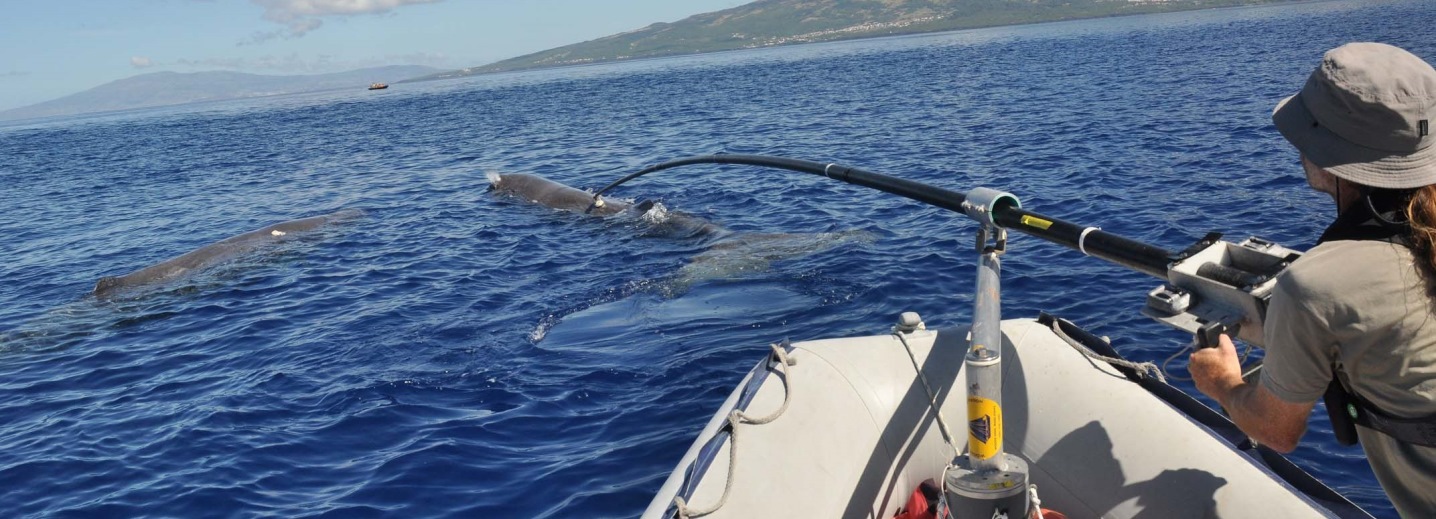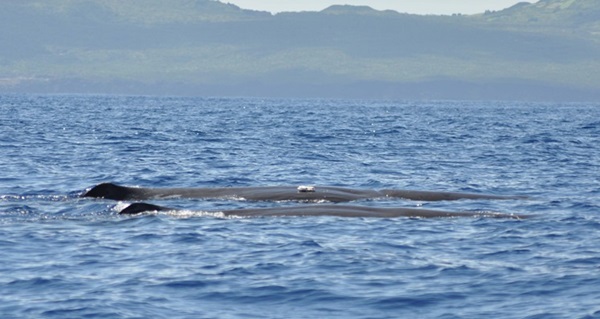
What does the sperm whale say?
When a team of researchers began listening in on seven sperm whales in the waters off the Azores, they discovered that the whales’ characteristic tapping sounds serve as a form of individual communication. But what are they actually saying?
By Birgitte Svennevig, birs@sdu.dk
“They clearly have something on their minds - but to be perfectly honest, we haven’t the faintest idea what that might be.”
That is how the marine biologists Magnus Wahlberg and Claudia Oliveira summarised their findings following their research trip to the Azores, where they ventured out to sea to attach listening instruments to seven sperm whales and subsequently attempted to analyse the strange tapping sounds they make, known as codas.
However, the biologists are not frustrated that they cannot understand the whales. In fact, they are very pleased with the outcome of their research trip to the Atlantic, because it led to a surprising new insight into the world of sperm whales:
Much like Morse code
“It is a new finding that sperm whales communicate as individuals. Until now, biologists have believed that sperm whales communicate as a single group, in the sense that each group has their own set of vocalisations used by its members to communicate with other groups. What we discovered, however, was that individual sperm whales communicate individual messages to other individual members of the group,” said Magnus Wahlberg.
Much like Morse code, these messages consist of a series of tapping (also described as clicking) sounds in a variety of combinations, such as four long taps followed by two short ones. To date, scientists have registered 21 different messages.
A variety of messages
Each whale is capable of vocalising a variety of messages, some of which they use more frequently than others.
For example, one message consisting of five identical tapping sounds was vocalised no less than a total of 288 times by four of the whales, while the researchers recorded two of them vocalising a message composed of three identical tapping sounds 183 times.

802 vocalisations
In total they recorded 802 of these vocalisations from five of the whales, while the remaining two stayed quiet. Colleagues from Aarhus University and the University of the Azores accompanied the two researchers on the trip.
“One could imagine that the vocalisations give information about who each of the individuals in the group are, whether they are heading for the surface or depths or if they have found food. It could be mothers calling to their young or females inviting males to mate with them.”
The researchers are particularly interested in the most communicative of the whales, which vocalised the majority of the 21 different messages and accounted for 294 of the 802 recorded codas.
“It may be interesting to learn more about this particular individual. All we know is that it is 9.3 metres long, which makes it difficult to determine its gender. We do not know whether it belongs to the same group as the other sperm whales we recorded, so it is really difficult to know what it was saying. Perhaps it is a matriarch telling its group where to go,” said Wahlberg.
First discovered during World War II
Humans first encountered sperm whale vocalisations - not to be confused with whale song - during World War II. Submarines played a new and crucial role in naval warfare, and considerable resources and efforts were invested into finding ways to locate enemy submarines, which led to the development of sonar technology.
Sailors would sometimes mistake a high number of underwater sounds for submarines, which would later turn out to be whales.
The sperm whale
Sperm whales are capable of making the loudest sounds of any animal on the planet. They use these sounds for echolocation and as a form of communication. The sperm whale is the world’s largest predator, and it can track squids up to a kilometre away using echolocation.